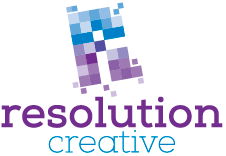The Resolution of the 9 ft. x 61 ft. Mural

A few months ago I was commissioned to design a mural for the offices of the Dunham Fund, a philanthropic organization supporting education and community development programs through grant-making. The fund was established by the late John C. Dunham, president and chairman of Equipto, a steel shelving company based in Aurora, IL and founded by his father. Preference for grants is given to applicants within greater Aurora area.
Challenge:
The intention of the mural was to cover five sections of wall in their lobby and hallway, showcasing Equipto history and the geographic area covered by this non profit. After the mural was designed, it would be printed on a wallpaper material and applied to the wall. Photographs were provided to me of the Equipto manufacturing plant, historic logos and Mr. Dunham. I also found diagrams of Equipto products and Mr. Dunham’s signature to enhance the mural. The Fox Valley Park District and the City of Aurora provided additional photographs. I did a site visit to some local landmarks and photographed the remainder of the images.
However, because of the mural dimensions, the photographs could not be used at their native size. Are you familiar with the term resolution? Resolution is how the level of detail in an image is measured. The rule of thumb for printed materials is the resolution of an image needs to be 300 pixels per inch. If an image is enlarged beyond this resolution, the images will appear ragged or jagged. For example, an 8 x 10 digital photograph I had available to use might have a resolution of 300 ppi, but as an image is enlarged, the resolution is lowered in proportion. Enlarging an image to twice it’s size, would lower the resolution by half. The quality of the image would be extremely poor.

Solution:
The solution I developed was to alter the photos to look more like hand drawn art, simplifying some of the details and color. The adjusted images were then converted to a vector format and further edited to fade into the background pattern on the murals. Vector images may be enlarged to any size and retain their fidelity; they are not resolution dependent. This technique was used for all the mural photos. The animated gif above, which I created in Adobe Photoshop, shows an example of how the photographs were recreated as vector artwork so they could be used at a larger size and still look good.
Aurora Sign Company did a beautiful job of printing the mural. Click the image below to view all five sections of the artwork I created.
If you still not quite sure you understand the concept of resolution, this blog post may help. Working with a professional designer will ensure images are used at the correct resolution. Still confused? Contact Lisa at Resolution Creative for a free consultation.
